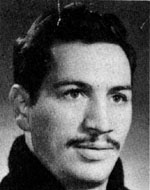Schwartz, Shaul
Son of Shlomo and Rina. He was born on 19.9.1953 in Moshav Mishmar Eilon and attended the ORT high school in Ashkelon, where he was loved by his teachers and friends and was always willing to help. He was a member of the Hanoar Haoved vehalomed youth movement and continued to visit the nest during his high school years, where he spent many hours swimming in the sea, meeting and talking with his friends and friends. And table tennis, he was a quiet, gentle and courteous fellow, his friends fascinated by his loyal friendship and his love for his friends. Shaul was a loyal friend. Shaul was drafted into the IDF in February 1972 and volunteered for Golani. Because of visual impairments, the profile was classified too low and encountered difficulties. But he insisted. He wanted to serve in a combat unit. Finally he managed to convince his commanders, and his request was accepted. He had experienced all the basic training difficulties, but he never complained if he was a thin, lean, physically fit fellow. Shaul experienced many difficulties and difficult training in basic training and became a strong, mature and Simcha soldier, determined, trained and prepared for any mission. In the Yom Kippur War Shaul participated in the battle for the conquest of Hermon and other battles in the Golan Heights. He saw his best friends dead and wounded, but he did not flinch and continued to fight fiercely. He told his parents nothing. In the short phone calls with the family, which he was trying to obtain for a long time, he demanded the safety of the members of the household and calmed them down. He wrote a lot of letters. “I feel great, but a little depressed because of the weather that does not allow for home departures.” Wrote in one of his letters, “but it’s not so bad. I want you to tell my parents that I have not called lately, because the phone is not right here, and on the first chance I’ll call them.” For over a month he had not left the battlefield and had not visited his parents’ house – yet he had found the strength to conceal the grief and sorrow, the difficulties and the pain, and soothe his family. During the short vacations he received at the end of the war, Shaul visited the hospitals where his wounded comrades lay. He went from bed to bed, talked to them, encouraged them, and was tormented by their anguish. “I am very sorry that I did not come to visit after the war,” he wrote to his good friend Shlomit, “because every short vacation I was given I used to visit my brother who was in the hospital, so that a lot of free time was not left within 48 hours.” The war brought about a great change, he returned more mature, more stormy, and painful to the fall of the unit members. He became more serious, darker, a little closed and older than his age. He took advantage of his few vacations not only to visit his friends but also to meet with his family – his parents, his older brother and his niece. On the 12th of Tammuz, 5734 (1974), Shaul fell during his service. He was laid to rest in the Ashkelon cemetery. Survived by his parents and brother. In a book in memory of the Ashkelon children who fell in Israel’s wars, several pages are dedicated to Shaul – his biography, passages from his letters, his friends from childhood, and a poem written by one of them in his memory.
